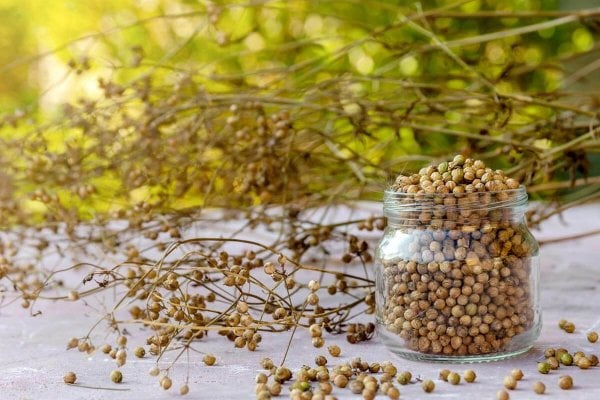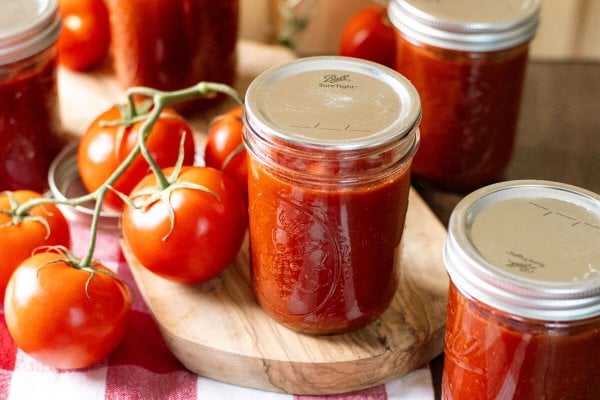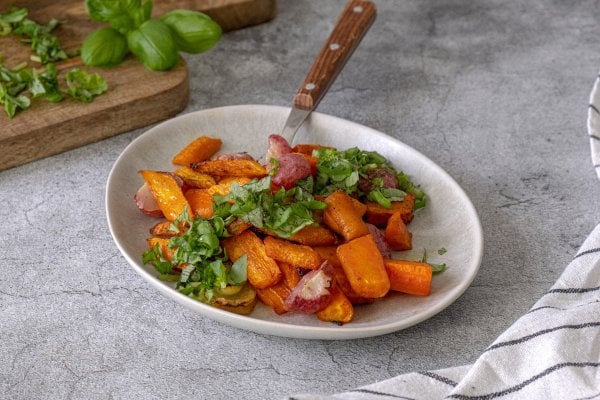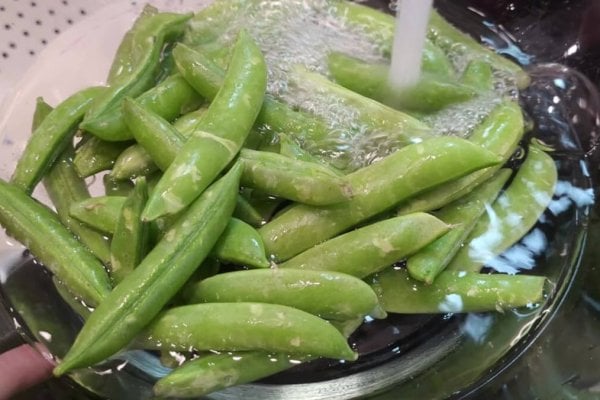






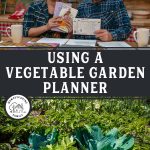

Using a vegetable garden planner to layout and plan your garden will help you bring in a plentiful harvest. It will help you decide how many seeds to plant, what seeds to start indoors and when, when to transplant outside, what seeds to sow directly in the ground, and it will even help you estimate when you’ll harvest your first crop. Planning out your garden with all of this information ahead of time will help you make the most of your seed, time and effort, giving you the best chance of success in the upcoming growing season.
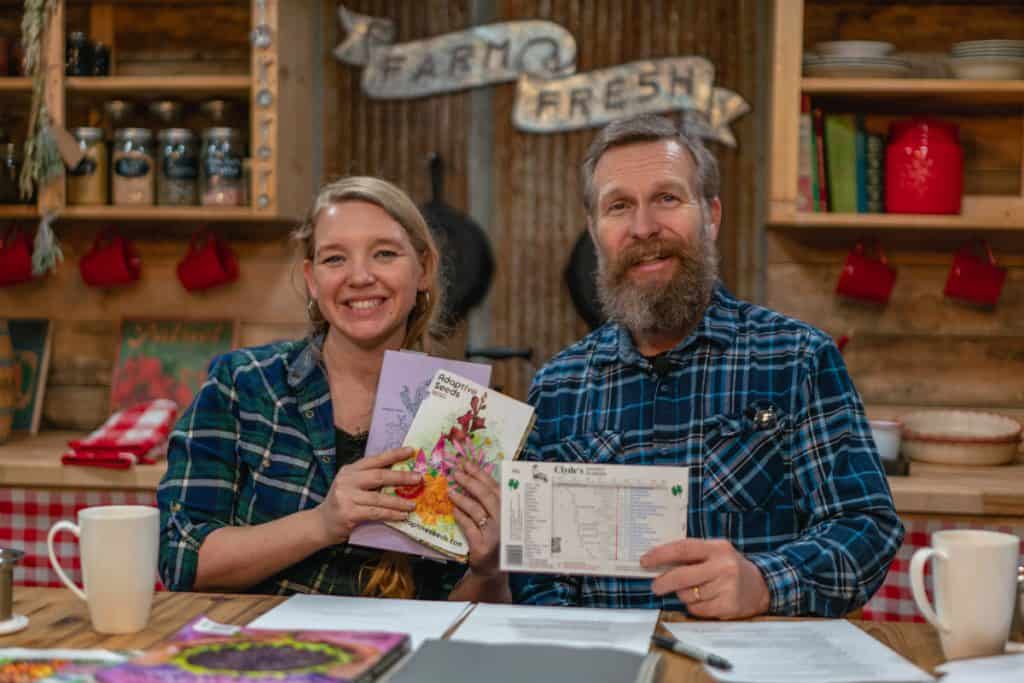
Clyde’s Garden Planner, the one we recommend, even gives you information on companion planting and spacing on your plants so you can estimate how much your harvest will be!
If you don’t already have one, go grab Clyde’s vegetable garden planner now! Be sure to use code “HOMESTEADINGFAMILY.COM” for 10% off your order!
It’s easy to say that most of us want to grow our best garden every year. But how do we go about it?
Getting our seeds started indoors or planting them in the garden as early as possible will give us the longest growing season (for us this is very important since our growing season is considerably shorter than most of the nation).
But how do we know when to start seeds indoors and when to direct sow seeds outdoors? How do we know how many seeds we need to plant? And how many crops can fit into our garden area?
By using a vegetable garden planner!
What is a Vegetable Garden Planner?
A garden planner, specifically Clyde’s garden planner, is like a gardening encyclopedia that’s full of helpful information that makes planning your garden so easy.
Using a garden planner is invaluable when it comes to planning your garden and, as long as you know your average first and last frost dates, it can tell you when to start seeds indoors, when to direct sow seeds outdoors, when to expect the first harvest from your crops, and so much more.
How Do You Use a Vegetable Garden Planner?
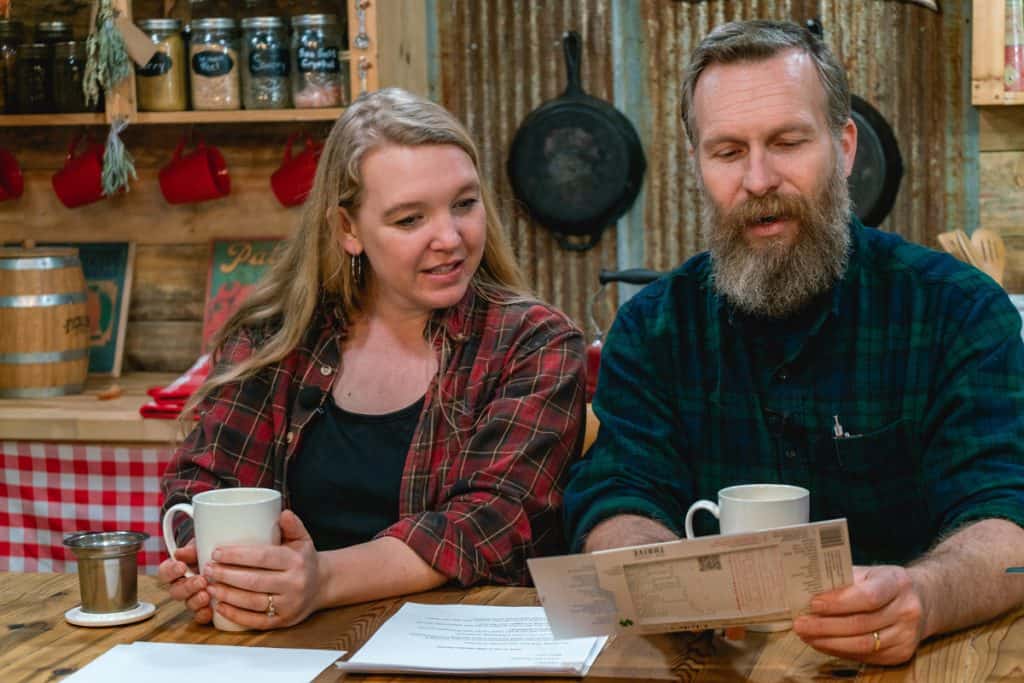
The first thing you need to know is the average last frost date in the spring for your area. If you don’t know that, Clyde actually has a sheet that’s included with your garden planner that gives some general rules of thumb. However, to get a more accurate window, we suggest reaching out to your local agriculture extension office or better yet, asking your closest gardening neighbor.
Once you know your last average frost date, on the garden planner you’ll slide the red line until it lines up with that date. With the planner in place, you’ll then be able to see all the information needed.
It’s important to know all this information well ahead of time because you may find out that you need to start your seeds indoors in order to get a successful harvest.
Planting Schedules
Clyde’s garden planner will give you two helpful planting dates:
- When to start your seeds indoors
- When to transplant or direct sow seeds outdoors
For plants that are best started indoors, you’ll see “SI” next to them which stands for “Start Indoors”. Some seeds can be both started indoors or direct-sown and will depend largely on the length of your growing season.
General Harvest Window
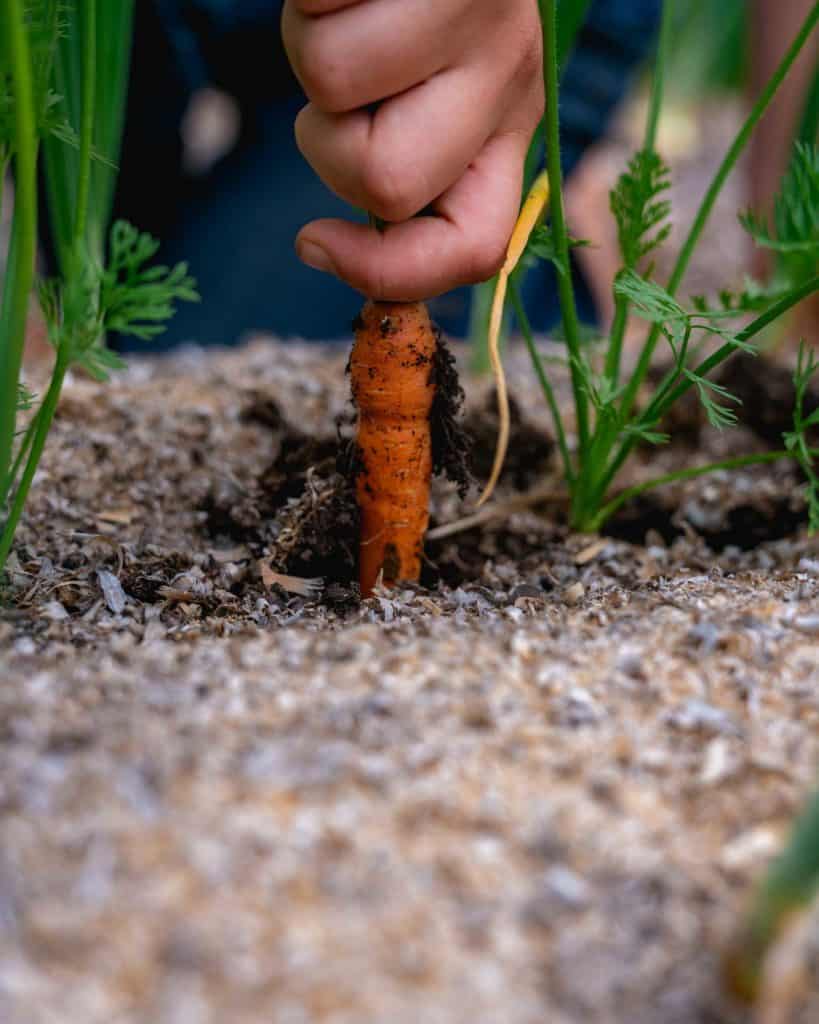
Clyde’s Garden Planner tells you when to expect your general harvest. This is especially helpful if you’re planning to process and put up your crops in order to build up your long-term food storage supply.
If your goal is to eat from your garden from spring through fall, you can use this information for succession planting so you can harvest your crops over a longer period of time.
If you’re curious what our preservation year looks like, you can see Carolyn’s preservation year at a glance here.
Soil Temperature for Germination
When you’re wanting to direct sow, or even start seeds indoors in a cool area such as a garage or basement, you need to be sure your soil is warm enough for the seeds to germinate properly.
You may find using something like a seedling heat/germination mat will give you better success if you’re having a hard time keeping your soil warm enough.
Clyde’s garden planner will tell you the minimum soil temperature needed for each seed type to be able to germinate. This information comes in very handy because temperatures and weather fluctuate from year to year, so even if your last frost date has passed, the soil temperatures may still be too cool to transplant your tomatoes, peppers, and cucumber plants outdoors and you will want to start these crops indoors and possibly with a heat mat.
How Many Seeds to Plant
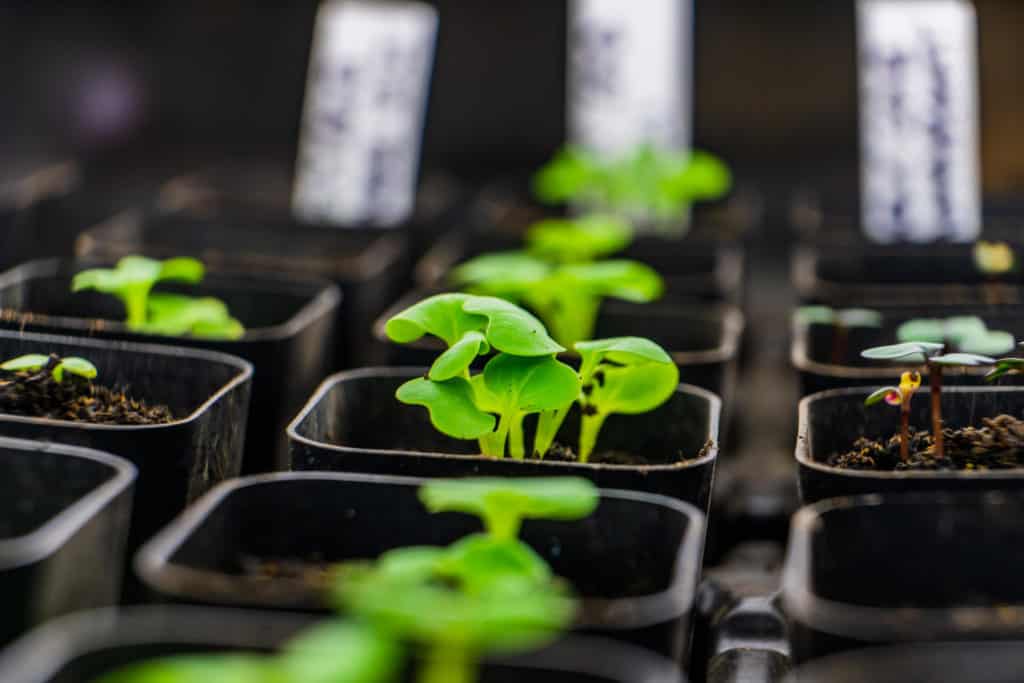
Clyde’s vegetable garden planner also tells you how many seeds to plant per 10 foot row which can really help you plan (and not over or under-buy) when purchasing seeds. This is an estimate and will vary depending on your soil and climate, but it is a great place to start!
Plant Spacing
Knowing how far apart to plant your seeds or starts, and how far apart your rows need to be is helpful information that Clyde’s planner also gives.
If you want more information about spacing and watering information, check out our Spring Garden Planning Ideas, Tips and Tricks post here.
Planting Depth
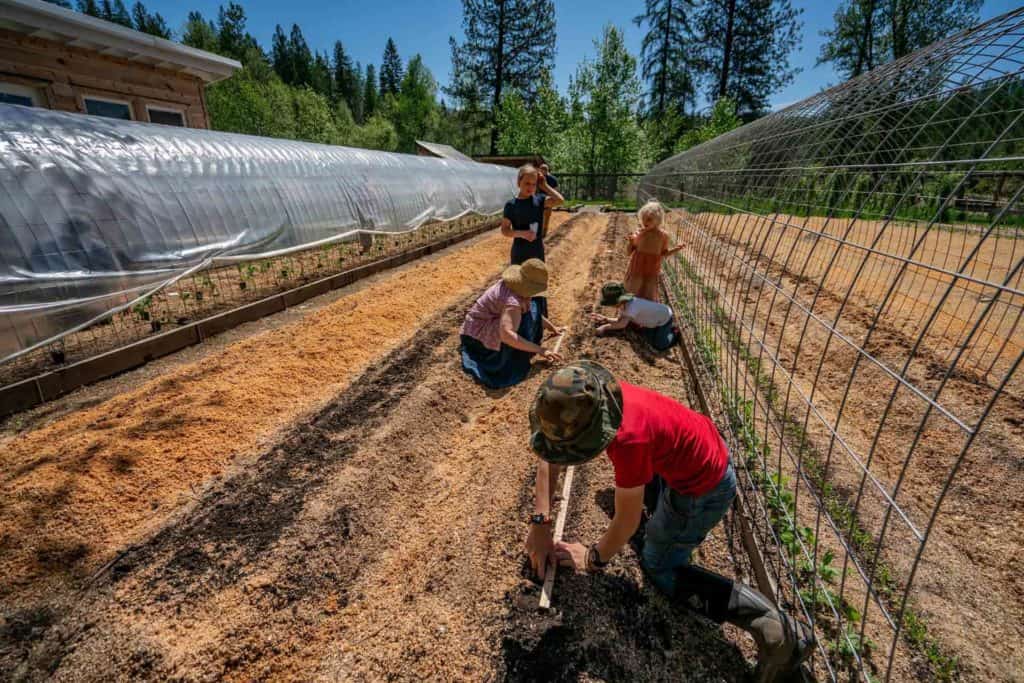
There are some general rules of thumb when it comes to planting depth. Two times as deep as the seed is wide is a great general rule to follow.
But there are always exceptions, and Clyde’s planner has some good suggestions. Like carrots; Clyde’s suggests planting carrot seeds about 1/4 inch deep whereas most seed packets will tell you to lightly dust soil over the top of them. Ever since we started planting our carrots about 1/4 inch deep, we’ve never had issues with carrots not germinating.
A lesson we’ve learned with these suggestions and general guidelines is to experiment with them and find what works best for your location.
Expected Yield
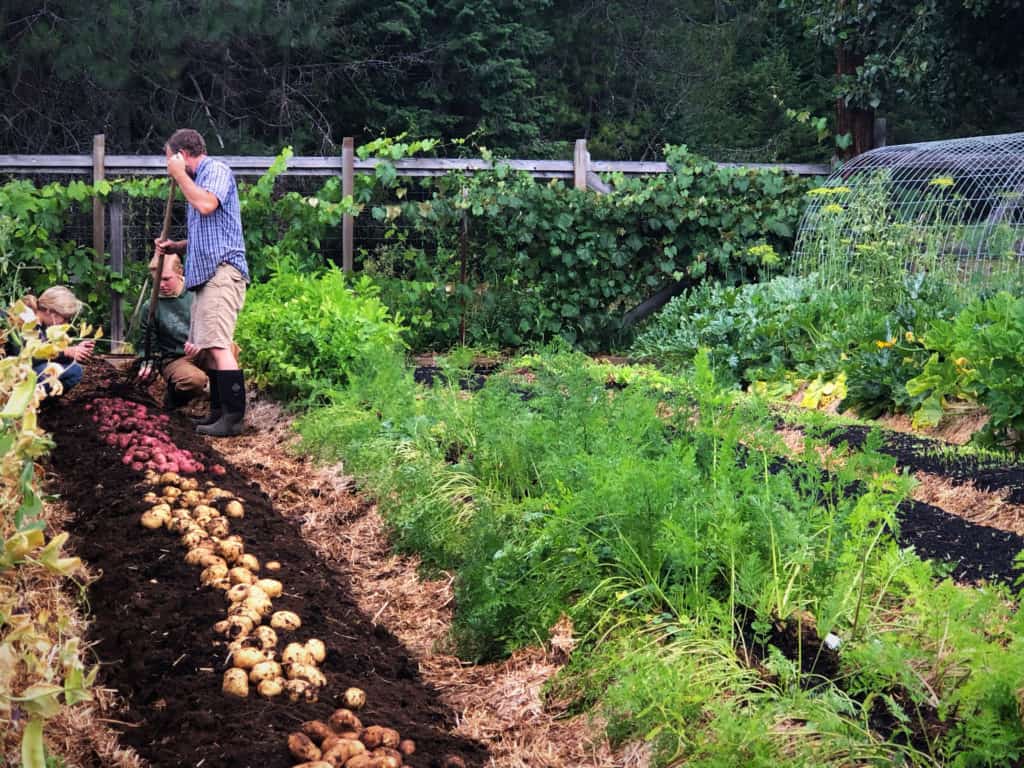
If you’re trying to grow a garden to feed your family for a whole year, it’s important to know how many plants you’ll need to plant.
Clyde’s planner gives you an approximate crop yield per 10-foot row if you follow their guidelines for vegetable planting and spacing.
Again, this is a general guideline, results will vary, but it gives you a great starting place for estimating yield and you will learn what works for you over time.
Companion Planting

If you’ve listened to me for any amount of time, you know that I try to avoid planting a mono-crop on any single row in my garden.
We utilize companion planting as much as possible to help ward off predatory insects, help improve pollination, avoid depletion of specific nutrients in the soil, and even utilize taller plants to help give shade to cooler-weather plants.
Beyond the Fall Frost

Knowing that your garden season doesn’t end at the first fall frost is very important to extend your growing season as long as possible. Here are some tips on how to protect your garden from frost.
One thing we like to do is to actually grow what we call a “fall garden” by doing a second planting in our garden from mid-July to early August. In fact, here are 20 plants you can plant in late summer and still get a fall harvest.
Fall Planting Schedule
If you flip Clyde’s garden planner over, you can actually use it to plan out your fall vegetable garden as well once you know your average first frost date! Simply line up the red line to your first fall frost date and you’ll see all the above information laid out for you.
Hopefully, by utilizing Clyde’s garden planner, you have your best growing season yet! We use our planner every single year, and what we love most is that we can build on the information we learn each year.
We never stop learning, adapting, or growing when it comes to gardening!
More Spring Gardening Posts
- Get a Jump Start on Early Spring Gardening – Pantry Chat #75
- Spring Garden Planning Ideas, Tips & Tricks
- Garden Planning for Serious Food Production
- Crop Rotation in a Vegetable Garden
- How to Make Compost the Easy Way – Composting 101
- When and How Often to Turn Compost
- Home Composting (Troubleshooting & FAQ’s)
- Learn How To Start Seeds Indoors (What, When, Why & How)
- When To Start Seeds Indoors
- Seed Starting Problems (& How to Fix Them)
- 10 Common Gardening Mistakes to Avoid
- Making Raised Garden Bed Rows & Super-Charging Your Soil
- Are Quality Garden Tools Worth the Cost?
- My Favorite Tools for Gardening (And How to Care for Garden Tools)











